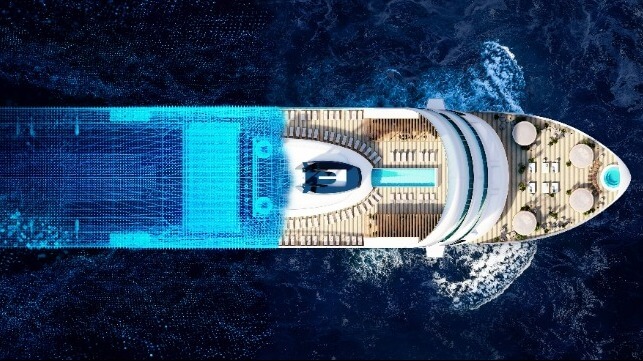YSA Brings Greater Accountability and Efficiency to Cruise Ship Design

[By: YSA]
Powerful modelling software from the forefront of land-based architecture can help cruise ship owners to provide better accountability of the steps they are taking to enhance sustainability, material selection and inclusiveness in guest services, according to YSA Design.
The Oslo-based interiors and exteriors design specialist is breaking new ground in using the Revit data-based tools and Building Information Modelling (BIM) driving digital transformation in architecture ashore for the initial stages of ship design. The techniques will help owners meet new and broadening social responsibilities on the environment and accessibility, while also benefiting ROI, says YSA.
“The combination of Revit’s data-based capability and 3D BIM software allows designers to model spaces more effectively for compliance on accessibility and to increase control over the materials used,” says Trond Sigurdsen, Chairman, YSA Design. “Creativity in design is our calling card but these analytics enhance efficiency at the earliest stage of design, benefiting inclusiveness, hotel management and accountability on the carbon footprint of materials selected.”
In a market first for cruise shipping, Sigurdsen said that YSA Design had used the BIM-Revit design tool in a project as lead architect to improve communication with the Owner and Shipyard, and enhance sustainability in surface materials selection by taking account of supplier, origin and recyclability. He envisages levels of accountability being achievable for ship sustainability to match shore-based scales such as BREEAM. He described class societies as “slow in proposing sustainable classification” and IMO as “dragging its feet" on implementing environmentally friendly rules. “The EU`s Green Deal seems to be quicker in pushing shipyards and suppliers to use lower carbon materials,” he commented.
YSA Design is also developing population flow simulations, guest-centric energy optimisation and off-peak power harvesting analyses to increase efficient use of service engineering resources.
“Basing flow studies on simulations is less costly and risk-free. Ship designers have become familiar with these tools as a way of making spaces accessible on board ship and eradicating bottlenecks, but exporting files from 3D Revit takes design to another level,” said Sigurdsen. “It unlocks more effective design at the GA stage and the gains for inclusiveness, logistics and operations can be significant. Design efficiency can increase revenue space, cabin size or guest numbers. Alternatively, an owner with a set number of guests in mind might build a smaller ship which is compliant on accessibility but less power-hungry. Today, saving cruise ship energy is business-critical as well as a sustainability imperative.”
YSA Design’s commitment to energy efficiency in design has previously been showcased in its collaborative work with Ship Planner. Ship Planner has created a unique, open data platform to facilitate enhanced performance and sustainability in hotel management. Developed with energy services and engineering firm Scenso, Ship Planner uses onboard sensors to monitor hotel loads and provide actionable data to enhance efficiency in the three ship ‘life-support systems’: air, water and power.
The products and services herein described in this press release are not endorsed by The Maritime Executive.
